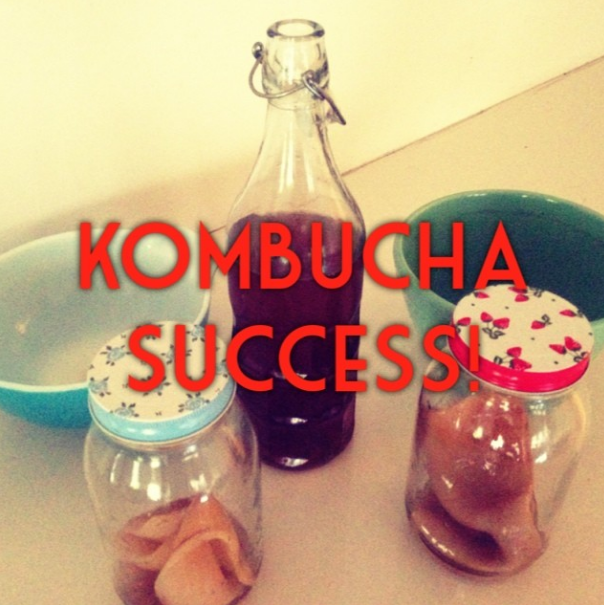When I was a kid my brother Ben used to grow mushrooms and raise axolotls in his bedroom (in and around my brother Pete’s feral mess and a pile of skateboards and BMX bits). I now realise these carefully reared mushrooms were kombucha “SCOBYs” and that his pre-pubescent experiments were quite ahead of the times. Ben was like that.

Before this all gets too weird for the unfamiliar, I’ll point out that kombucha is my latest fermenting experiment. You can catch up on some of my others here and here. And learn about why you should ferment here. Kombucha is a slightly fizzy fermented tea-based beverage. And a SCOBY (AKA a “symbiotic culture of bacteria and yeast”), or “mother”, is the starter mushroom that activates and propels the drink (by eating sugar…yes sugar!!) to become an “alive” gut-healing beverage.
In this post I’m going to cover some basics for making your first batch at home in the simplest way possible (and it is DEAD SIMPLE).
Why drink kombucha
The stuff is brimful of probiotics and is stand-out stuff for digestive health, assisting with nutrient assimilation. I won’t go into great detail here on the other benefits (iquitsugar.com will be covering this shortly), but studies have shown it can assist in the treatment of arthritis, depression, and heart burn, is great for liver detoxification, improves pancreas function, increases energy and can be used to treat Candida.
How to drink kombucha
Straight from the fridge. About 100ml (1/3 of a glass) a coupla times a day. First thing in the morning before breakfast is fab (I have some before heading off for exercise…beautifully energising), so is after dinner as something of a digestive chaser. I like to team it with a dash of soda/seltzer for extra fizz.
The deal with the SCOBY
These things are ugly as sin – rubbery and spongy, floating at the top of your concoction, with brown stringy bits dangling off it. They’re the